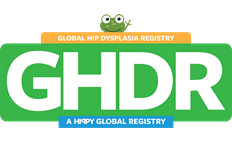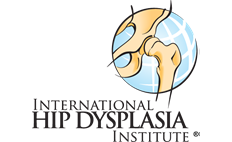Our research strategy
Our research strategy is positioned to build on earlier hip dysplasia studies that have shown the need for comprehensive long-term follow-up. We will explore clinical, demographic, investigative and outcome data to find the most effective hip dysplasia screening methods and management practices. We will also examine long-term treatment outcomes and identify any risk factors associated with hip dysplasia.
Taking a whole of department approach (orthopaedic surgeons, paediatricians, physiotherapists, orthotists, sonographers, nurses and clinical researchers), we use observational study methods to collect data and track patient outcomes. At The Royal Children’s Hospital site, VicHip collected data is integrated into electronic medical records with periodic batch transfers to REDCap.
The VicHip registry includes non-surgical and surgical patients. As the cohort of children in the registry grow older, we will also explore issues specific to each age group. However, at this point, our priority is to inform and standardise processes, align practices (including the development of tools) and conduct a thorough assessment of ultrasound and X-ray imaging quality, utility, brace choice and duration of treatment.
VicHip brings together brilliant minds from around the world, fostering collaborative research and discovery. We work with other hip studies and registries to improve the management of hip dysplasia globally and explore strategies to advance public health. We look forward to sharing discoveries and developing innovative programs that could have a big impact on patients and families worldwide.
Read more about VicHip research partnerships
Patient reported outcome measures (PROMs)
The patient's voice is critical for shared decision-making. It can help inform changes to the delivery of paediatric hip care in Victoria. Patient reported outcome measures (PROMs) ensure our research is robust and complements clinical assessments. They enable a more comprehensive understanding of the outcomes and effectiveness of healthcare quality.
VicHip registry participants will be asked on occasion to complete a PROM questionnaire. We collect these at set time points throughout the course of the patient’s medical care. This allows real-time feedback to measure the patient’s health status or health-related quality of life, personal experience, treatment efficacy and the quality of care delivered.
Health economic evaluation
VicHip works collaboratively with the Health Economics Unit at the University of Melbourne to generate insight and evidence into economic evaluation approaches to hip dysplasia in Victoria.
Primary and health-related quality of life outcomes are assessed by family socioeconomic and geographic characteristics, along with the cost to the healthcare system and families. Family socioeconomic characteristics such as the primary carer’s employment status, ethnic background, age at childbirth, and the number of children in the household will be considered. Geographic characteristics being considered includes urban, rural or remote. Cost and outcome implications associated with different socioeconomic and geographic groups will inform targeted strategies to manage hip dysplasia and address equity.
Registry objectives and expected outcomes
VicHip registry objectives
- Develop an evidence-based screening program with long-term follow-up protocols to minimise residual dysplasia rates and assess the health economic impact of this change
- Analyse medical imaging quality, interpretation and relationship to long-term outcomes to develop an appropriate reporting framework that directs treatment, cost-effectively
- Elucidate natural histories of treated and untreated hip dysplasia to produce (i) robust clinical pathways (ii) normative radiological and clinical data to identify hips at risk
- Identify the socioeconomic, geographic and health issues that impact the timing of diagnosis and management of hip dysplasia
- Develop a set of tools to risk-stratify hip dysplasia based on long-term outcome data
- Identify risk factors for late presentation and silent dysplasia and develop strategies to reduce the impact of both.
Expected registry outcomes
The registry will define the patient (demographics, genetics, environmental, socioeconomic, care provision), the dysplasia (clinical findings, risk factors, classification, comorbidities), the investigations (medical imaging quality and interpretation, pathology, genetics) and the healthcare provider (level of experience, location, practice type, access to education). It will collect data on management (non-surgical and surgical), the intention of treatment and devices used so that appropriate outcome measures can be made at critical time points.
In broad terms, the outcomes of the registry will be grouped into the following measures that align with the underlying research questions:
- Survival Measures – measures of the natural history of treated dysplasia
- Clinical Effectiveness - the utility of treatment and the numbers needed to treat
- Adverse events - include complications of treatment and the rate of treatment failures
- Patient Reported Outcomes - relating to function, the experience of care and quality of life
- Resource utilisation - treatment visits, hospitalisations, cost of treatment.
Research questions and expected outcomes
VicHip research questions
- What is the modelled cost-benefit of an optimised screening and management protocol?
- What medical imaging protocol would direct treatment for the best outcomes and the least cost?
- What pathways do optimally and non-optimally treated dysplastic hips follow?
- What socioeconomic, geographic and health factors adversely impact the timing of diagnosis?
- What combination of tools best risk-stratifies hip dysplasia against outcomes?
- What risk factors predict late presentation and silent dysplasia?
Expected research outcomes
Analysis of the effectiveness of current screening programs and defining the incidence of both early and late presentation of dysplasia will allow the development of an effective screening program that is fit for the Australian environment by identifying risk factors beyond those already described that may be related to health service provision, geographic location, socioeconomic factors, and health literacy.
A standardised medical imaging collection process at key time points allows imaging quality and intra- and inter-rater reliability studies to be undertaken. This will form the foundation to develop a suite of standard, reliable imaging measurements that can be used for both severity classification and the direction of treatment.
Protocolised follow-up of treated hip dysplasia will allow natural histories to be defined and refined according to a range of influencing patient and treatment factors. When paired with patient reported outcomes, this should result in the development of more nuanced clinical pathways and improve the detection of hips that are at risk of failing to develop.
Combined with long-term outcome data, a more complex multivariant analysis will be used to discover what factors are ultimately important in the identification, treatment and follow-up of hip dysplasia and risk stratifying those factors.
Long-term outcome measures include patient reported functional outcome scores, evidence of residual acetabular dysplasia, the need for further corrective surgery before reaching skeletal maturity and ultimately, early arthroplasty rates. Supplementary GenV outcomes beyond skeletal maturity, including antenatal data, biological samples for future analyses, and medical/social records data combined with these, will enable the development of therapeutic regimes for the entire spectrum of hip dysplasia, allowing the elucidation of risk factors for late presentation and silent dysplasia.
We hope the collaboration between VicHip, GenV and GHDR will lead to the development of evidence-based international screening and long-term follow-up protocols, minimising the socioeconomic burden of hip dysplasia to patients, families, and the health system; from all geographic locations, informing policy changes and the establishment of a future National Hip Registry.
Proudly in partnership with
VicHip is funded by the Australian Government Department of Health and Aged Care under the Medical Research Future Fund grant 2015989.
Murdoch Children's Research Institute acknowledges the Traditional Custodians of lands on which we work and pay our respect to their Elders, past, present and emerging.










